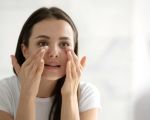1. Understanding Eye Strain in Graphic Designers and Digital Artists
Graphic designers and digital artists spend countless hours in front of screens, focusing on fine details and vivid colors. This intense visual demand often leads to eye strain, characterized by dryness, blurred vision, headaches, and discomfort. Recognizing how eye strain develops is the first step in learning how to prevent eye strain in graphic designers and digital artists.
Prolonged screen exposure reduces blink rate, causes focusing fatigue, and exposes eyes to blue light—all factors contributing to digital eye strain.
1.1 Why Digital Artists Are Particularly Vulnerable
Unlike general computer users, digital artists engage in precise work with varied contrast and brightness levels, increasing visual stress. They often maintain fixed postures, which can exacerbate discomfort.
2. Key Causes of Eye Strain for Digital Artists
Several factors combine to cause eye strain among graphic designers and digital artists:
2.1 Extended Screen Time Without Breaks
Continuous focus on digital screens for hours limits eye relaxation and refocusing.
2.2 Poor Lighting and Glare
Inadequate ambient lighting or glare from windows and screens force the eyes to work harder.
2.3 Incorrect Monitor Settings
High brightness, low contrast, or improper color calibration strain visual processing.
3. Practical Ways to Prevent Eye Strain
Preventing eye strain involves a combination of environmental adjustments and healthy habits tailored for creative professionals.
3.1 Follow the 20-20-20 Rule
Every 20 minutes, look at something 20 feet away for at least 20 seconds to relax eye muscles.
3.2 Optimize Workspace Lighting
Use soft, indirect lighting to minimize glare and adjust monitor brightness to match room conditions.
3.3 Use Blue Light Filters and Quality Monitor Settings
Applying blue light filter software or glasses reduces harmful light exposure. Calibrate your monitor for accurate colors and comfortable contrast.
3.4 Maintain Proper Posture and Monitor Distance
Position your monitor about an arm’s length away and slightly below eye level to reduce strain.
3.5 Regular Eye Checkups
Visit an eye specialist regularly to monitor eye health and get personalized advice.
4. Real-Life Case Study
Emily, a digital illustrator, experienced chronic headaches and blurred vision after prolonged work sessions. After consulting an optometrist and implementing the 20-20-20 rule, optimizing her lighting, and investing in blue light blocking glasses from Eye Docs, her symptoms improved dramatically. She credits these changes for boosting her productivity and comfort.
5. Additional Tips and Professional Support
Beyond everyday habits, consider ergonomic accessories like adjustable desks or monitor stands. For tailored eye care products or expert guidance, visit Eye Docs, where you can find the best solutions to protect your eyes and sustain your creative passion.








